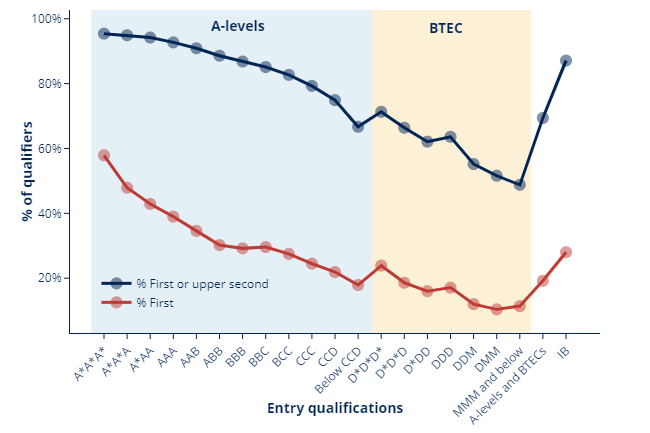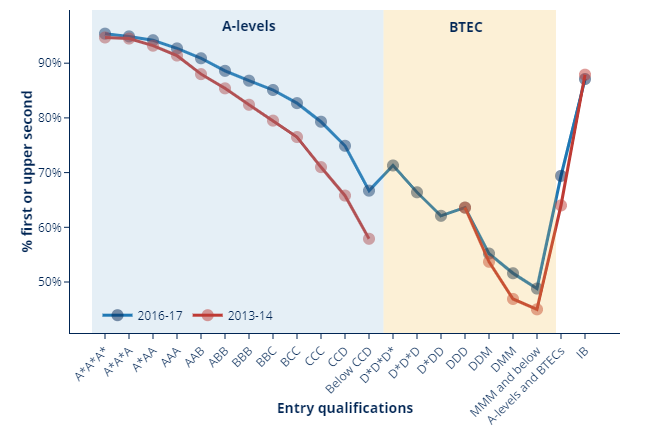Differences in student outcomes
Degree outcomes: overall results
In 2016-17, 76 per cent of graduates achieved either a first or upper second class degree:
- 27 per cent gained a first
- 49 per cent gained an upper second.
Entry qualifications
There is a clear relationship between degree classification and entry qualification: as entry grades increase, the proportions who gain a first or upper second also increase.
The difference between those entering with A*A*A* at A-level and those entering with below CCD is 29 percentage points, with 95 per cent of graduates with A*A*A* gaining a first or upper second class degree compared with 67 per cent of graduates who entered with A-level grades below CCD.
The difference between the highest and lowest BTEC grades is 23 percentage points: 71 per cent for those with three Distinction*s (D*D*D*), and 49 per cent for those with three Merits (MMM) and below.
The proportion of graduates with International Baccalaureates (IB) gaining a first or upper second class degree is 87 per cent.

Since 2013-14 there has been an increase for all entry qualifications to varying degrees. The largest increase in first or upper second class degree is nine percentage points - for graduates entering with A-level grades of CCD. The proportion who enter with an IB and gain a first or upper second class has seen no change.

Describe your experience of using this website
